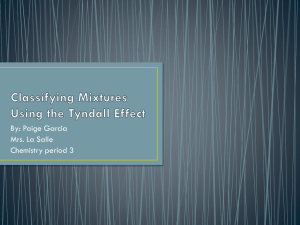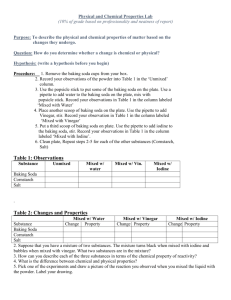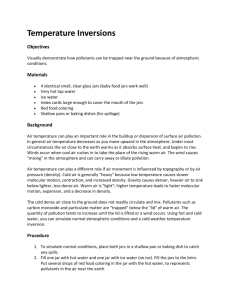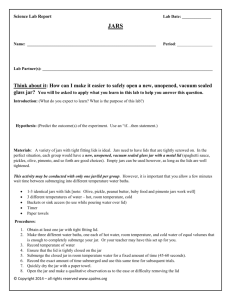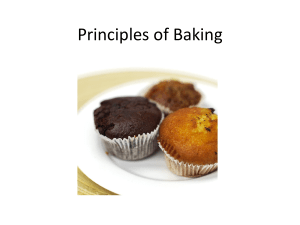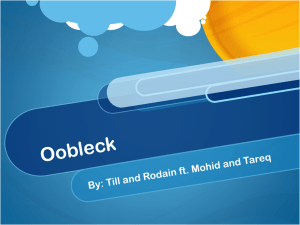Effects of Solutions LAB #3
advertisement
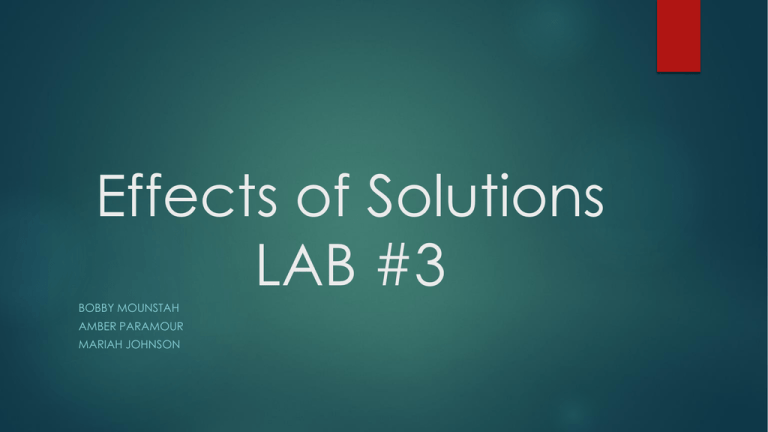
Effects of Solutions LAB #3 BOBBY MOUNSTAH AMBER PARAMOUR MARIAH JOHNSON Purpose To classify mixtures as solutions or colloids using the Tyndall Effect Materials Sodium Hydrogen Carbonate Cornstarch Stirring Rod Distilled Water or Tap Water Flashlight Masking Tape 3 jars with parallel sides Teaspoon Cup Procedures 1. Using a cup, make a paste by using ½ teaspoon of cornstarch with 4 teaspoons of water 2. Fill 1 jar with water. Add 1½ teaspoon sodium hydrogen carbonate to a 2nd jar and fill with water. Stir to mix. Add the cornstarch paste to the 3rd jar and fill with water. Stir to mix 3. Turn off all the lights in the room. Shine the flashlight at each of the jars and record your observations (Data/Results): Jars Observations Liquid in Jars: Observations: 1. Baking Soda(Sodium Hydrogen Carbonate is used in this) The baking sodas particles could be seen moving around randomly 2. Water There were no visible particles 3. Cornstarch The jars contents inside were transparent Conclusion/Analysis What was learned from this lab experiment is that sodium hydrogen carbonate is used in baking soda which is what was used in the lab. Some errors would be the wrong amount of cornstarch used or baking soda. The only one that was obvious to see is the baking soda since it was transparent. The first jar that contained the cornstarch was visible to see but not a lot of particles. The second jar contained only water which didn't show anything but water. Conclusion/Analysis Questions 1. The 2nd jar allowed us to see the beam of light, since it was only water 2. What made the light beam visible was the liquids particles and the jar itself since it reflected the light 3. Yes,the light beam would be visible in the filtrate because that water was clear and barely had any particles in it 4. What would be observed if the baking soda was replaced with sucrose or sodium chloride would still be the same 5. If cornstarch was replaced with flour or diluted milk, there wouldn't be any paste which would ruin the lab since the paste is needed 6. Because if you see any moving particles in a liquid then it is a colloid, but if you can't see any particles it is a suspension CA. Standard: 1d Students will formulate explanations by using logic and evidence
